-
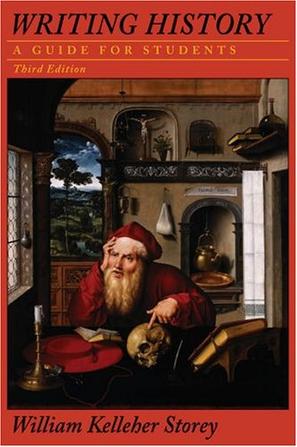
Writing History
Bringing together practical methods from both history and composition, Writing History provides a wealth of tips and advice to help students research and write essays for history classes. The book covers all aspects of writing about history, including finding topics and researching them, interpreting source materials, drawing inferences from sources, and constructing arguments. It concludes with three chapters that discuss writing effective sentences, using precise wording, and revising. Using numerous examples from the works of cultural, political, and social historians, WritingHistory serves as an ideal supplement to history courses that require students to conduct research. The third edition includes expanded sections on peer editing and topic selection, as well as new sections on searching and using the Internet. -
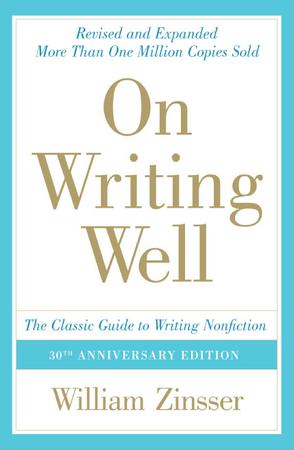
On Writing Well
"On Writing Well" has been praised for its sound advice, its clarity and the warmth of its style. It is a book for everybody who wants to learn how to write or who needs to do some writing to get through the day, as almost everybody does in the age of e-mail and the Internet. Whether you want to write about people or places, science and technology, business, sports, the arts or about yourself in the increasingly popular memoir genre, "On Writing Well" offers you fundamental priciples as well as the insights of a distinguished writer and teacher. With more than a million copies sold, this volume has stood the test of time and remains a valuable resource for writers and would-be writers. -
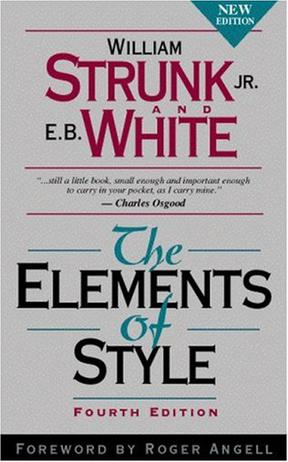
The Elements of Style
This book is intended for use in English courses in which the practice of composition is combined with the study of literature. It aims to give in brief space the principal requirements of plain English style. It aims to lighten the task of instructor and student by concentrating attention (in Chapters II and III) on a few essentials, the rules of usage and principles of composition most commonly violated. The numbers of the sections may be used as references in correcting manuscript. The book covers only a small portion of the field of English style, but the experience of its writer has been that once past the essentials, students profit most by individual instruction based on the problems of their own work, and that each instructor has his own body of theory, which he prefers to that offered by any textbook. The writer's colleagues in the Department of English in Cornell University have greatly helped him in the preparation of his manuscript. Mr. George McLane Wood has kindly consented to the inclusion under Rule 11 of some material from his Suggestions to Authors. The following books are recommended for reference or further study: in connection with Chapters II and IV, F. Howard Collins, Author and Printer (Henry Frowde); Chicago University Press, Manual of Style; T. L. De Vinne Correct Composition (The Century Company); Horace Hart, Rules for Compositors and Printers (Oxford University Press); George McLane Wood, Extracts from the Style-Book of the Government Printing Office (United States Geological Survey); in connection with Chapters III and V, Sir Arthur Quiller-Couch, The Art of Writing (Putnams), especially the chapter, Interlude on Jargon; George McLane Wood, Suggestions to Authors (United States Geological Survey); John Leslie Hall, English Usage (Scott, Foresman and Co.); James P. Kelly, Workmanship in Words (Little, Brown and Co.). It is an old observation that the best writers sometimes disregard the rules of rhetoric. When they do so, however, the reader will usually find in the sentence some compensating merit, attained at the cost of the violation. Unless he is certain of doing as well, he will probably do best to follow the rules. After he has learned, by their guidance, to write plain English adequate for everyday uses, let him look, for the secrets of style, to the study of the masters of literature. -

The Elements of Style
This book is intended for use in English courses in which the practice of composition is combined with the study of literature. It aims to give in brief space the principal requirements of plain English style. It aims to lighten the task of instructor and student by concentrating attention (in Chapters II and III) on a few essentials, the rules of usage and principles of composition most commonly violated. The numbers of the sections may be used as references in correcting manuscript. The book covers only a small portion of the field of English style, but the experience of its writer has been that once past the essentials, students profit most by individual instruction based on the problems of their own work, and that each instructor has his own body of theory, which he prefers to that offered by any textbook. The writer's colleagues in the Department of English in Cornell University have greatly helped him in the preparation of his manuscript. Mr. George McLane Wood has kindly consented to the inclusion under Rule 11 of some material from his Suggestions to Authors. The following books are recommended for reference or further study: in connection with Chapters II and IV, F. Howard Collins, Author and Printer (Henry Frowde); Chicago University Press, Manual of Style; T. L. De Vinne Correct Composition (The Century Company); Horace Hart, Rules for Compositors and Printers (Oxford University Press); George McLane Wood, Extracts from the Style-Book of the Government Printing Office (United States Geological Survey); in connection with Chapters III and V, Sir Arthur Quiller-Couch, The Art of Writing (Putnams), especially the chapter, Interlude on Jargon; George McLane Wood, Suggestions to Authors (United States Geological Survey); John Leslie Hall, English Usage (Scott, Foresman and Co.); James P. Kelly, Workmanship in Words (Little, Brown and Co.). It is an old observation that the best writers sometimes disregard the rules of rhetoric. When they do so, however, the reader will usually find in the sentence some compensating merit, attained at the cost of the violation. Unless he is certain of doing as well, he will probably do best to follow the rules. After he has learned, by their guidance, to write plain English adequate for everyday uses, let him look, for the secrets of style, to the study of the masters of literature. -
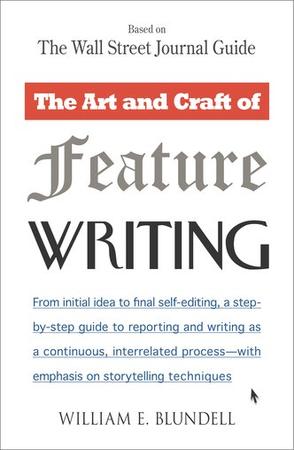
The Art and Craft of Feature Writing
-
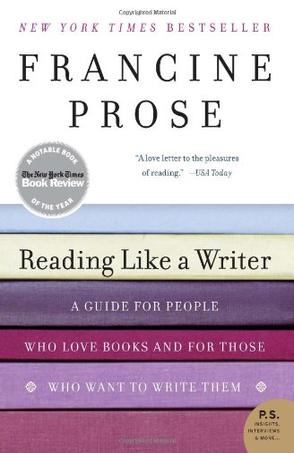
Reading Like a Writer
This book presents an inside look at how the professionals read and write. Long before there were creative writing workshops and degrees, how did aspiring writers learn to write? By reading the work of their predecessors and contemporaries, says the author. In "Reading Like a Writer", Prose invites you to sit by her side and take a guided tour of the tools and the tricks of the masters. She reads the work of the very best writers, Dostoyevsky, Flaubert, Kafka, Austen, Dickens, Woolf, Chekhov, and discovers why these writers endure. She takes pleasure in the long and magnificent sentences of Philip Roth and the breath-taking paragraphs of Isaac Babel; she is deeply moved by the brilliant characterization in George Eliot's "Middlemarch". She looks to John Le Carre for a lesson in how to advance plot through dialogue, to Flannery O'Connor for the cunning use of the telling detail, and to James Joyce and Katherine Mansfield who offer clever examples of how to employ gesture to create character. She cautions readers to slow down and pay attention to words, the raw material out of which literature is crafted. Written with passion, humor, and wisdom, "Reading Like a Writer" will inspire readers to return to literature with a fresh eye and an eager heart. In this entertaining and edifying New York Times best-seller, acclaimed author Francine Prose invites you to sit by her side and take a guided tour of the tools and tricks of the masters and to discover why their work has endured. Written with passion, humor, and wisdom, Reading Like a Writer will inspire listeners to return to literature with a fresh eye and an eager heart; to take pleasure in the long and magnificent sentences of Philip Roth and the breathtaking paragraphs of Isaac Babel; to look to John le Carre for a lesson in how to advance plot through dialogue; and to Flannery O'Connor for the cunning use of the telling detail. And, most importantly, she cautions listeners to slow down and pay attention to words, the raw material out of which all literature is crafted.